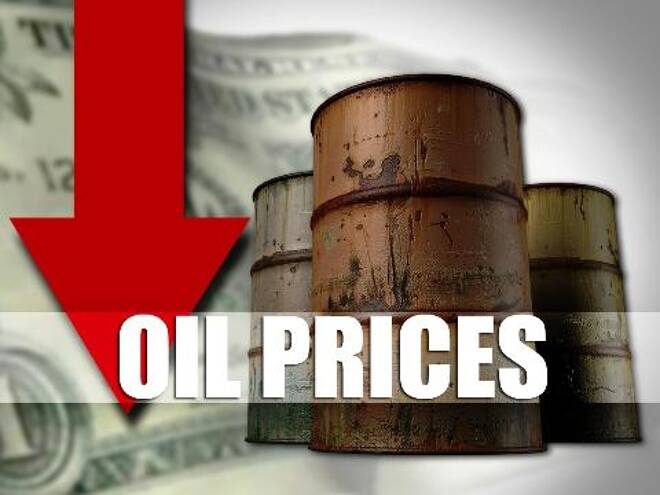Advertisement
Advertisement
Oil Markets Are Said To Have Reached “Contango”. Do You Know What That Means?
By:
Crude oil eased on Wednesday and added just 10 cents in the Asian session on Thursday. Crude is trading at 97.02 while Brent oil is holding at 104.74 flat
Crude oil eased on Wednesday and added just 10 cents in the Asian session on Thursday. Crude is trading at 97.02 while Brent oil is holding at 104.74 flat in early trading. Analysts said they were surprised WTI finished lower after the US Energy Information Administration’s weekly inventory report showed lower oil and petroleum product inventories. The report showed a 4.4 million barrel drop in gasoline stocks and a 1.8 million barrel decline in diesel inventories. Both products had been expected to show increases. But traders continued to be preoccupied by concerns about lower gasoline use once the summer driving season ends in a few weeks. The data also showed lower refinery utilization, another sign the oil business is beginning to shift operations in anticipation of lower gasoline use.
Oil traders are fleeing Brent crude at the fastest pace in eight years as signs of a glut undermined bets that the Islamist insurgency in Iraq would threaten supply. Output from Libya, holder of Africa’s biggest reserves, is about 450,000 barrels a day, more than double the rate in April, according to government figures and data compiled by Bloomberg.
Oil futures moved into a structure called contango, where immediate prices are cheaper than later ones. The shift surprised traders who sold off the commodity. The move to contango may also hurt demand among financial investors as it removes the “roll yield” available when short-term prices trade at a premium, Mahesh says. This is the profit traders get when they can sell costlier immediate contracts and buy cheaper longer-dated ones. When the situation reverses into contango, investors pay a premium to switch from the immediate contracts.
Investopedia defines “contango” as a situation where the futures price of a commodity is above the expected future spot price. Contango refers to a situation where the future spot price is below the current price, and people are willing to pay more for a commodity at some point in the future than the actual expected price of the commodity. This may be due to people’s desire to pay a premium to have the commodity in the future rather than paying the costs of storage and carry costs of buying the commodity today. A further explain says that a market is “in contango” when the delivery price of a particular futures contract has to converge downward to meet the futures price. If prices did not converge, it would set up an opportunity for investors to profit from arbitrage. Contango situations can be costly to investors holding net long positions since futures prices are falling. For example, assume an investor goes long a futures contract today at $100. The contract is due in one year. If the expected future spot price is $70, the market is in contango, and the futures price will have to fall (unless the future spot price changes) to converge with the expected future spot price.
The opposite of contango is known as normal backwardation. A market is “in backwardation” when the futures price is below the expected future spot price for a particular commodity. This is favorable for investors who have long positions since they want the futures price to rise.
Market fundamentals influencing U.S. and global oil markets have diverged this summer. Record-high seasonal refinery runs and low inventories in the United States have put upward pressure on prices of U.S. domestic crudes West Texas Intermediate (WTI) and Light Louisiana Sweet (LLS), while low demand in Europe and Asia and unplaced West African crude oil cargoes have depressed North Sea Brent prices. As a result, the Brent-WTI spread has narrowed, with WTI prices briefly reaching a premium to Brent prices for the first time since August 2010. While WTI prices quickly returned to a discount to Brent, the Brent-WTI spread remains relatively narrow, with the July spread averaging $3.92/barrel, the lowest level this year and almost 50% below the 2014 average.
About the Author
Barry Normanauthor
Advertisement
